
62 minute read
ASSOCIATIONS IN ACTION Building Momentum By Lisa LaBruno
Building Momentum
Although RILA’s 2012 Loss Prevention, Audit, and Safety Conference (LPAS 2012) took place three months ago, the session content lives on in the form of initiatives driven by RILA and our members.
One of the biggest challenges to planning the conference year after year is identifying session topics that help “move the industry forward” and apply across retail segments, sizes, and footprints, at the same time securing the most qualified speakers to deliver the message. Our LP steering committee invested considerable time and effort into making this year’s program great, and we took pride in the exceptional quality of the education attendees received. So, rather than file it away once the conference ended, the educational content is laying a foundation for some of RILA’s key initiatives over the next several months.
Summer Webinar Series
RILA’s Summer Webinar Series, which runs June through August, features some of the top-rated sessions from LPAS 2012. Walter Palmer, CEO and president of PCG Solutions, kicked things off with an encore performance of “Survival Skills in the Era of Doing More with Less.” Palmer provided a blueprint for understanding where you are spending your time, identifying the most important things you should be doing, and then negotiating for resources and outcomes.
On July 24 Steve Szilagyi, senior vice president of distribution at Lowe’s, will share how ownership and personal accountability can reduce workplace injuries in “Cornerstones of Lowe’s Safety Program.” Conference attendees were impressed by Lowe’s energy and passion around safety. To hear it for yourself, join us July 24.
In August, Bryce Bennett, senior manager of asset protection supply chain for The Home Depot, will discuss how his team effectively implemented a quality ergonomic program in a warehouse environment. Webinars are free and open to everyone. To register for upcoming webinars or to view past ones, go to the Events and Education page at RILA.org.
Innovative Technology
LPAS 2012 featured several sessions addressing the need for innovation in the retail industry—how the industry is driving innovation and retailers’ expectations for loss prevention technology of the future. This desire for innovative technology solutions to emerging risks is the driving force behind the Retail Loss Prevention Technology Priorities Document (TPD), a compilation of preferred technology functionalities for theft-deterrent solutions that retailers believe can advance with innovation. The spirit of the TPD is to encourage collaboration across industries and to stimulate innovation for the benefit of the industry and the solution providers who offer cutting-edge solutions to problems retailers face. RILA’s horizons committee, comprised of LP technology experts from among RILA’s retail members, is helping drive the TPD initiative.
by Lisa LaBruno Lisa LaBruno leads the asset protection offerings in the areas of loss prevention, retail crime, workplace safety, disaster recovery, operational audit, research, and benchmarking for the Retail Industry Leaders Association. RILA members include more than 200 retailers, product manufacturers, and service suppliers, which together account for more than $1.5 trillion in annual sales, millions of American jobs, and more than 100,000 stores, manufacturing facilities, and distribution centers domestically and abroad. LaBruno can be reached at 703-600-2024 or lisa.labruno@rila.org.
Emerging Criminal Risks
The open forums and roundtable sessions in the investigations, workplace safety, and audit and analytics tracks at LPAS 2012 opened our eyes to ideas for initiatives that can deliver value to RILA member retailers. Just listening to retailers discuss the multitude of challenges they face helps us stay focused on the big picture, rather than getting wrapped-up in one issue to the exclusion of other pressing issues. For example, it was clear from the discussion during the investigations roundtable session that organized retail crime (ORC) is not the only pressing criminal risk retailers are struggling to manage.
Following LPAS 2012, RILA’s crimes against business committee conducted a SWOT (strength, weakness, opportunity, threats) analysis to pinpoint other challenges facing retailers. Among them were crimes against persons, financial crimes, cyber/e-commerce fraud, and healthcare. We’ll be tackling these and other emerging criminal trends in 2013.
Mobile POS and Beyond
Finally, there was a lot of buzz among LPAS 2012 attendees about a session led by The Home Depot and Walgreens entitled “Mobile POS and Beyond.” No doubt emerging POS technology has captured the industry’s attention. Earlier this month, RILA announced an initiative in partnership with the University of Arkansas (UA) and with support from Checkpoint Systems and Ernst & Young to study emerging POS technology, evaluate the associated loss prevention risks, and identify possible preventive strategies. In September RILA member retailers will convene at UA’s Center for Retailing Excellence to continue driving the research project forward and to take advantage of the grand opening of UA’s RFID Research Center laboratory. Following that, RILA’s Asset Protection Leaders Council (APLC) will meet at Walgreens’ headquarters outside Chicago in early October to review the preliminary research findings.
A good litmus test for evaluating our conference program is the extent to which the session content lives on once the conference has ended. I am proud to report that LPAS 2012 passed the test. If you are interested in registering for the Summer Webinar Series, attending any of the meetings referenced in this article, or joining a RILA committee, please feel free to contact me at lisa.labruno@rila.org.
Feature Feature Feature
PREMISES SECURITY LIABILITY
REASONED BEHAVIOR TRUMPS PERFECTION
By Jon Groussman, J.D., and Constantine “Dean” Nickas, J.D.
Owners, operators, and insurers of businesses, including commercial and residential properties of all types, take little solace in news reports that suggest a decline in the nation’s crime rate. The focus of their concern is more likely to be the growing volume of incidents of violent crime, diminished law enforcement assistance, and the related risk of premises security litigation.
Just in the two-week period preceding the February 27th Ohio high school shooting where three students died, for example, a supervisor was shot at a California Federal Building; two were killed and two injured outside of a New Jersey market; and two were shot at a Connecticut hospital. Less than two weeks later, two people were killed and seven injured at a Pittsburgh health clinic shooting.
Beyond the loss of life, what’s peculiar to many business owners is the lack of sustained media coverage and law enforcement focus of events such as these, suggesting that random violence is now commonplace and viewed as an inevitable risk that may not be possible to manage. When the Columbine High School tragedy occurred in 1999, for example, the nation’s attention was focused on that event for many months. In contrast, this year’s Ohio school shooting remained in the national news for less than a week. Brazen robberies, senseless shootings, and other horrific acts of workplace violence now occur with such frequency that they often go unreported, even at the local level, on a busy news day.
For corporate security professionals who are understandably focused on shrink reduction and other types of physical losses, the nation’s frequency and growing

Increasingly, employees, customers, shareholders, and the general public hold all companies accountable for irresponsible behavior, whether that involves product integrity, quality of service, or premises security. The cost of crime in a court of law for any company that has not managed that risk in a responsible manner is limited to financial loss. The cost of crime for an irresponsible company, in the court of public opinion, however, is unlimited.
acceptance of violence may serve to divert attention away from protection of their company’s human assets—employees, customers, and suppliers. However, there is a substantial price to pay for not paying adequate attention to premises security. The stakes and odds are stacked heavily against any organization that does not take necessary steps to protect their employees, customers, and others who might expect security measures minimizing the risk of physical harm.
Multimillion dollar settlements and jury verdicts against owners and landlords continue and are now commonplace, not only for physical and psychological injuries suffered, but also involving punitive damage awards against corporate entities for negligence. Increasingly, the underlying message is clear—demonstrate reasonable preparation in advance of violent crime or face significant financial consequences.
Beyond reduction of financial liability, however, companies that properly manage premises security stand to benefit in many other tangible ways. A secure physical environment, for example, serves to attract and retain better employees who are likely to deliver higher levels of customer services. In turn, customers who feel secure and receive better service will shop and buy more frequently, and both of those factors can also have a positive impact on shrink. Management of premises risk not only drives revenue, it also benefits a company’s internal culture, overall brand reputation, and shareholder value.
The Significance of Foreseeability in Litigation
The most critical circumstances driving premises security lawsuits are related to failure to assess risk factors and to adjust security measures accordingly. Risk factors can be measured by reliable crime and risk data, prior incidents or complaints, risks inherent to the industry, and the frequency of assessments. In 2009, for example, a Mississippi jury awarded $2.5 million in a premises liability case involving an elderly woman who was attacked in the parking lot of a major grocery store chain. The defendant was found to be negligent for failure to provide proper security in light of several prior purse snatchings and assaults in the same parking lot.
Premises security litigation always involves looking into the “retrospectoscope” and micro-analyzing events and decisions that have occurred long before a violent criminal event takes place. The key inquiry in these cases is whether a premises owner may be held liable for failing to protect people from the results of reasonably foreseeable criminal conduct. Foreseeability of a security threat may be established by proving that a retailer or property owner either had actual knowledge or should have known of a particular assailant’s inclination toward violence, or by proving that the defendant had actual or constructive knowledge of a dangerous condition on the premises that was likely to cause harm to a patron or employee.
A dangerous condition may exist if, based on past experiences, there is a likelihood of criminal conduct by third persons in general or if security conditions are inadequate. Generally speaking, jurors are more apt to punish a defendant for outright ignorance and failure to investigate and proactively address known security risks. Jurors may also react to poorly reasoned decisions, such as concluding, contrary to evidence, that additional security measures are unnecessary.
Most state courts conclude that the type and extent of prior crimes will supply admissibility to establish foreseeability of criminal activity, and the radius from the business and the time period of prior crimes are key issues of relevance that are determined on a case-by-case basis. Evidence relating to the nature and likelihood of any future crime has a direct bearing on whether the preventative measures taken by the property owner were reasonable in light of all the other relevant facts and circumstances in the case.
Because of that, most state courts will not exclude evidence of similar, relevant criminal activity at surrounding businesses. In a Florida lawsuit involving a woman murdered during a robbery at her apartment complex, the building’s management company settled for $5.3 million for failure to provide adequate security measures based on the high crime rate in the surrounding area. The court’s rationale is that isolation of a particular property from its surrounding area forces a jury to decide the question of foreseeability in a vacuum.
The importance of forseeability in litigation makes it essential for premises owners to have a security plan in place that’s been designed by a security professional, that’s

The process of creating and articulating a security risk matrix takes time and patience. It can’t be constructed overnight and requires a disciplined, data-driven approach to protecting the assets of the company and demonstrating a return on investment. In premises security litigation, “reasonableness” is the standard, rather than perfection.
Satisfaction. The Yarra Honda four-story dealership in Melbourne, Australia focuses on customer service with help from Milestone XProtect® Enterprise. Staff use the video surveillance software to identify showroom customers who need help and receptionists monitor if employees are at their desks before transferring incoming calls. Proving again Milestone can solve problems that are more than security.
Milestone XProtect® is the world’s leading IP video surveillance management software and is reliable, future proof and easy to use. It supports the widest choice in cameras and seamlessly integrates with business and security solutions such as video analytics. Which means your possibilities are unlimited and you can keep your security options open. Discover more with Milestone and try our software for free at: www.milestonesys.com Milestone Systems U.S. Tel: 503 350 1100

based on reliable data, and that’s updated on a regular basis. The most effective tool in a defense counsel’s arsenal is the ability to introduce evidence at trial detailing the rationale and the steps taken by a defendant to reasonably ensure the safety of its customers and employees.
Security Program Assessment and Resource Allocation Provide Additional Defense
A well-researched and comprehensive corporate security plan must be properly implemented and documented, or it will provide little protection in court. Regardless of a defendant’s economic circumstances, juror reactions are particularly adverse when evidence is introduced that there had been a reduction of necessary security due largely to costs or budget cuts. If optimal security solutions are cost-prohibitive, then security plans must explore viable alternatives and must weigh the consideration of losses related to those alternatives.
Allocation of security resources should be based on any unique circumstances at the location, the loss trends and/or crime experience for the premises and the surrounding area, and the security plan should evaluate and articulate the associated risks those trends reveal. In any reallocation of resources, for any reason, planned documentation should also identify the security measures that remain in place to protect customers and employees. It’s critical for premises owners to illustrate that the security of customers and employees is their uppermost priority. Anything less than a demonstrated and well-documented level of commitment to that goal will likely result in a significant adverse verdict, if and when a third-party criminal event occurs.
The foundation of a defensible security plan must include several components, including: ■ Up-to-date, objective security surveys of the business location and immediate vicinity, ■ Relevant internal written policies and procedures, ■ Employee training on those policies and procedures, ■ Periodic awareness programs to reinforce that training, and ■ A schedule for ongoing review and updating of the overall plan.
One of the most significant obstacles to a successful defense of premises security is when an employee testifies that there was no training from the owner on customer safety. Even more damaging is when the employee cannot even explain the physical security measures that were in place, given the level of risk.
Most of the time jurors will accept that the legal standard in a negligent security case does not require perfection, but they do expect premises owners will do what is reasonable, given the specific circumstances and available resources. That’s why regular training, designed to educate employees on the security plan and the measures in place, is a key aspect of loss prevention as well as litigation defense.
Other key factors can influence the outcome of litigation, including whether: ■ Security guards, where applicable, were appropriate, available, and effective, ■ Physical devices, such as security cameras and appropriate lighting, were properly installed and operational, and ■ Policies regarding employee safety were in place and applied.
In some cases, taking partial security measures can backfire. For example, a state appellate court determined that a defendant who had no security cameras, employed no guards, had no windows that looked onto the parking lot of the restaurant, but did have a policy of requiring employees to be escorted to their cars in the parking lot at night, raised sufficient questions on foreseeability, so that the jury found the restaurant owner negligent following an assault despite enhanced security measures.
In some states, such as Florida, statutes mandate very specific security conditions, such as an unobstructed view of the cash register area from outside the establishment for certain types of businesses with a high potential for crime, notably convenience stores.

Decades of improvements in premises security techniques and tools, a higher level of communication among security professionals and business owners, and a lower level of public tolerance for negligent behavior have resulted in an environment in which violation of accepted industry standards and best practices can place a corporate defendant at risk of an adverse verdict.
Several Security Factors to Address
Decades of improvements in premises security techniques and tools, a higher level of communication among security professionals and business owners, and a lower level of public tolerance for negligent behavior have resulted in an environment in which violation of accepted industry standards and best practices can place a corporate defendant at risk of an adverse verdict. Additionally, failure to adhere to internal policies and procedures…intentionally or otherwise…will often subject a corporate defendant to a finding of negligence. Some states conclude that violation of internal policies constitutes outright negligence, while most states simply place such violations in the category of “evidence of negligence.”
If Interviewing is Your Profession, The International Association of Interviewers
is Your New Association

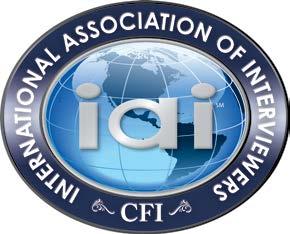
Knowledge is power. That is why the time is right to join IAI—the only association focused on the unique needs of loss prevention and investigation managers. Founded by the developers of the Certified Forensic Interviewer (CFI) designation, IAI takes the skills and insights of the professional interviewer to a whole new level by providing a wide range of essential members-only offerings previously only available for CFIs. Key IAI benefits include: • Online interview support though a customized rationalization matrix • Discounts on webinars, conferences, seminars, books, self-studies, and more • Complimentary subscription to IAInsider Journal • Collaborative idea exchanges through members-only blogs, social networking and mentoring programs • Much, much more!
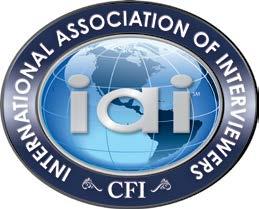
ChrIs MCDonAlD, senIor VICe PresIDent, CoMPAss GrouP, north AMerICA
Why Wait Another Day to Join IAI?
The International Association of Interviewers is your association, with distinct membership levels from which to choose. Visit www.iaofi.org today. www.iaofi.org

continued from page 56
Premises security negligence can be based on many factors. Broken, inoperable, missing, and insufficient security equipment, as well as out-of-date technology, can make litigation defense difficult. Very often a corporate defendant faces additional peril in litigation for the failure to preserve evidence, particularly surveillance video. Intentional destruction of evidence is uniformly viewed by most states as a basis to strike a corporate defendant’s pleadings or, at a minimum, to prevent the defendant from being able to contest liability. In many states, even negligent destruction of evidence, or failure to preserve it, subjects the defendant to a shifting of the burden of proof. This involves the imposition of a rebuttable presumption of negligence against the premises defendant. When this occurs, it forces that defendant to essentially disprove the proverbial negative. Alternatively, some states have a slightly less draconian punishment under certain circumstances, concluding that an “adverse inference” instruction to the jury is sufficient.
An adverse inference instruction can also be damning, however, because jurors are told that they can assume the evidence would not have been disposed of if it was favorable to the evidence. Therefore, it is of critical importance to preserve all evidence. In some cases, the defendants have even been penalized with sanctions for failure to preserve video that did not show anything. The rationale behind this is that it requires one to conclude that the corporate defendant is correct in its description of the contents of the surveillance video.
All of these challenges, involving planning, implementing, and maintaining a security plan, are increased considerably when multiple locations are involved, and increased exponentially when franchisees are involved. For large companies, consistency, communication, and control are paramount issues, and their financial resources, regardless of actual balance sheet conditions, often make them a perceived rich target for plaintiffs and juries.
Although size and complexity are not viewed by jurors as a legitimate basis for improper security planning or implementation, consider, for example, the significant security challenges faced by large retail companies who operate from thousands of company-owned or franchised locations across all fifty states on a 24-hour, 7-days-a-week, 365-day basis.
At one of the 2,000 North American locations of the Super 8 Hotel (a division of Wyndham Hotel Group), for example, a jury awarded more than $500,000 to a victim who was assaulted by a hotel employee who had entered her room with a master key. The hotel was sued for failure to conduct a criminal background check and for entrusting the master key to an employee who had been arrested on multiple occasions prior to and during his employment at the Super 8 Hotel.
Whether operating 2,000 locations or two, the unique risk assessment-related challenges for multisite owners include: ■ Staffing required to conduct regular on-site visits to facilities, ■ The application of inconsistent crime data, ■ The lack of event history at new locations, ■ Varying asset requirements and local laws, and ■ The cost, feasibility, and effectiveness of differing countermeasures.
Regardless of the complexity of situation, premises owners must understand and accept that the unique challenges to be confronted must occur within the entire organization, and not solely reside within the corporate security department.
Building an Effective Security Risk Matrix
Protection against premises liability is established most effectively through development of a risk security matrix, which represents a comprehensive and integrated picture of
an organization’s risks and the solutions to address them. A company’s security risk matrix is built on its underlying security strategy, which address four basic questions: 1. What are we attempting to protect? This question requires greater exploration and insight than simply identifying
“employees and customers” as assets that require protection. Intangible factors, including “goodwill” that’s identified as an asset on most corporate balance sheets, is based largely on a firm’s internal and external reputation. 2. What are the internal accountabilities? What roles will various departments or people play in the development, implementation, and ongoing evaluation of the security plan? Who is responsible for program effectiveness and how will results be reported and measured?
A well-researched and comprehensive corporate security plan must be properly implemented and documented, or it will provide little protection in court. Regardless of a defendant’s economic circumstances, juror reactions are particularly adverse when evidence is introduced that there had been a reduction of necessary security due largely to costs or budget cuts.


Retail Crime. Cargo Theft. Bank Crime. Fraud.
Verisk Crime Analytics helps companies fight crime through information sharing, technology, and advanced analytics.
continued from page 58
Regardless of internal disciplines, in the eyes of the public, accountability for premises security ultimately is borne by a company’s senior management. 3. What is the cost justification? Measuring a return on investment that’s largely intended to avoid or offset a liability claim is far from an exact science. However, it is possible to estimate, with a fair degree of accuracy, the potential impact of a negative premises security event, including jury or settlement awards; loss of business and revenue related to the incident; employee recruitment, training, and turnover; and similar items. 4. How will we articulate this program? Typically, there are a number of audiences that will require different explanations. Senior management will need insights focused on the program’s risk management strategy and cost-effectiveness. Employees will need a tactical explanation of goals, roles, and responsibilities. Legal counsel may require all communication regardless of audience. The underlying goal is to establish program awareness that creates transparency within the organization at all times, and not wait for a violent crime to be the catalyst for the company to focus on premises security.
A company’s security risk matrix should consider a variety of risk factors, and ideally, designate appropriate weightings. Each situation is unique, but as an example, a company might apply the following weightings: ■ 25 to 35%—Nature of the business, including inherent risks, operating hours, and cash on hand, specifically for each site. ■ 30 to 40%—Event history at the specific location. ■ 20 to 30%—External crime risk or the level of “social disorganization” in and around the immediate vicinity. ■ 10 to 20%—Subjective input from site management or law enforcement (unique circumstances).
In weighing risk factors, it’s important to recognize that premises owners are not absolved from liability simply because a particular criminal activity had not previously occurred on or near the property. In other words, a plaintiff’s contention that no duty to secure premises can arise until there is evidence of similar prior criminal activity will not warrant a dismissal of the case. Conversely, inherent risks and prior experience weigh heavily in jury decisions, such as in the landmark $102 million negligent security verdict in 2007 against a corporate owner/manager of a shopping center where an adult cabaret patron was shot. In this case twenty-six violent crimes had been previously reported at the club, and the owner had failed to illuminate or patrol the parking lot.
By combining objective and subjective crime data/forecasts, risk ratings should be developed for each location. The risk matrix survey tool should collect and evaluate information on event history, security countermeasures, industry and local practices, staff experience, law enforcement intelligence, and even the likelihood and potential crime-related impact of natural disasters.
The site selection process plays an important role in security risk evaluation. If properly managed, it can limit construction-related capital costs and eliminate the need for retrofitting. Depending on the risk-related classification designated to a particular location, a set of minimum security countermeasure thresholds can be allocated. Once a location’s risks are identified, security countermeasures must be designed and implemented with the understanding that security is not a one-size-fits-all undertaking.
To accommodate differences in risk classification, and to provide for any changes in risk that may arise, a risk matrix should include a menu of appropriate countermeasure options. The underlying goal is to establish flexibility that will provide alternative countermeasures that are considered reasonable under a broad range of circumstances, increasing or reducing security resources over time as the situation warrants. However, this system is effective and defensible in court if there is an established protocol for regular reevaluation of risk and countermeasure effectiveness.
Even the most sophisticated and dedicated risk management program will not entirely eliminate the likelihood that some unfortunate event will inspire litigation. Early investigation is a key component of any successful defense. Although every situation is different, there are a number of basic steps that can increase the likelihood of a positive legal outcome. In advance of any litigation, these measures include: ■ Ensuring that statements from employees and witnesses are thorough and accurate and that all evidence (notably video tapes) are properly preserved. ■ Involving legal counsel as soon as possible in order to protect your investigation with attorney-client privilege. ■ Putting boots on the ground as early as possible to ensure a first-hand understanding of the environment and the incident. Second-hand reports or interviews conducted long after the incident are typically unreliable. If internal security personnel are unavailable, consider engaging an outside security professional to assist in the investigation and to serve as liaison with the local police. ■ Analysis of the security measures in place at surrounding businesses and examination of area crime grids.
Having been served in connection with premises security, pre-emptive steps can include: ■ A careful re-examination and scrutiny of all the information collected following the incident, ■ Investigation of the security credentials of the plaintiff’s expert witness, and ■ Initial steps to explore alternative dispute resolution in advance of a trial.
continued from page 60
Weigh the Full Impact of Premises Security Liability
The process of creating and articulating a security risk matrix takes time and patience. It can’t be constructed overnight and requires a disciplined, data-driven approach to protecting the assets of the company and demonstrating a return on investment. In premises security litigation, “reasonableness” is the standard, rather than perfection.
Corporate cultures that are comfortable with rolling the dice and living with high levels of risk or that base decision-making solely on immediate ROI, are prone to shortcuts in assessing premises risk and to avoiding necessary security expenditures. Those risk calculations, often driven by worst-case scenarios of a catastrophic event and a related jury award, often fail to take into account the substantial damage that’s unrelated to economic loss.
Increasingly, employees, customers, shareholders, and the general public hold all companies accountable for irresponsible behavior, whether that involves product integrity, quality of service, or premises security. The cost of crime in a court of law for any company that has not managed that risk in a responsible manner is limited to financial loss. The cost of crime for an irresponsible company, in the court of public opinion, however, is unlimited.
Intangible factors that drive a company’s long-term success, including reputation and good will, as well as its ability to recruit, retain, and motivate employees, are also damaged as a result of inadequate management of premises risk. The loss of brand equity and public confidence that’s driven by premises security negligence, however, is the biggest price that’s paid.
JON D. GROUSSMAN, J.D., is president and COO of CAP Index. He is nationally recognized for advising private corporations and government entities on crime prevention strategies, as well as post-incident response and analysis. Groussman frequently provides expert forensic analysis in litigation charging negligent security. He can be reached at jgroussman@capindex.com. CONSTANTINE “DEAN” NICKAS, J.D., is a senior partner in Wicker Smith’s Miami office. In his 20-plus-year career, Nickas has litigated many cases involving negligent security and premises liability at both the state and federal levels. He has earned an AV® Preeminent™ rating from his peers, the highest level rating awarded to lawyers by Martindale-Hubbell®. Since 2009 Nickas has been named to the list of Florida Super Lawyers. He can be reached at cnickas@wickersmith.com.

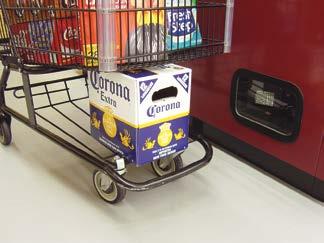
SOLUTIONS SHOWCASE AMERICAN DYNAMICS
SKECHERS Partners with American Dynamics to Meet Foreign Trade Zone Security Requirements
As one of the leading footwear companies in America, SKECHERS USA, Inc.’s latest distribution facility in Rancho Belago, California, moves a mountain of shoes each day. This high-volume center is designated as a U.S. foreign trade zone, which requires specific and measurable security standards as set down by U.S. Customs and Border Protection officials.
The Company
SKECHERS, an award-winning global lifestyle footwear company, develops and markets more than 3,000 styles for men, women, and children through its fitness and lifestyle divisions. The company is known for its popular lines, such as Shape-ups, Tone-ups, GOruns, and Active, and celebrity spokespeople, such as actress and Dancing with the Stars host Brooke Burke, fitness trainer Denise Austin, and former hockey player Wayne Gretzky. The $2 billion company was founded by Robert Greenberg in 1992.
Today, SKECHERS sells its products in more than 120 countries, ranging from Austria and Ireland to China, Thailand, and Brazil. The company has opened more than 300 retail stores in key metropolitan areas worldwide and partnered with distributors to open an additional 250 locations.
A significant portion of this worldwide product volume goes through SKECHERS newest distribution facility in California—a 1.8 million-square-foot, $250 million complex that serves as a U.S. foreign trade zone, one of eighteen foreign trade zones in California. As defined by the government, a foreign trade zone is a designated location in the United States where companies can use special procedures that help encourage U.S. activity—in competition with foreign alternatives—by allowing delayed or reduced duty payments on foreign merchandise, as well as logistical and tax benefits.
Challenges
While being a foreign trade zone reaps benefits for SKECHERS, it also comes with some specific security requirements. Greg Drivas, director of loss prevention for SKECHERS USA, says there is a higher expectation for perimeter security, as product is monitored entering and exiting the warehouse, which heightens the overall security needs versus a traditional warehouse operation.
Surveillance, especially in the form of high-quality video recording and playback, was a required feature for SKECHERS as it laid out its security plan to Select Systems Technology (SST) of Torrance, California, the systems integrator chosen for the installation.
That meant that the video needed to be quickly accessible, clear and smooth, and provide the ability to zoom in as needed, according to Vijay Patel, senior manager at SST.
SKECHERS also needed the video management system to have an open platform to accommodate cameras from multiple manufacturers and have a degree of scalability to grow along with the changing needs of SKECHERS operations. This new warehouse was built by SKECHERS to replace five existing facilities, and there is still room to grow.
SST, which had worked with SKECHERS on security projects at the other distribution centers under the consolidation plan, was already familiar with the requirements associated with
SKECHERS designed this new distribution center to give the company flexibility in its operations and a centralized distribution point for the next twenty years. By choosing victor and an IP surveillance solution from American Dynamics, SKECHERS is giving its security staff the same flexibility, allowing the camera network to grow along with the facility.
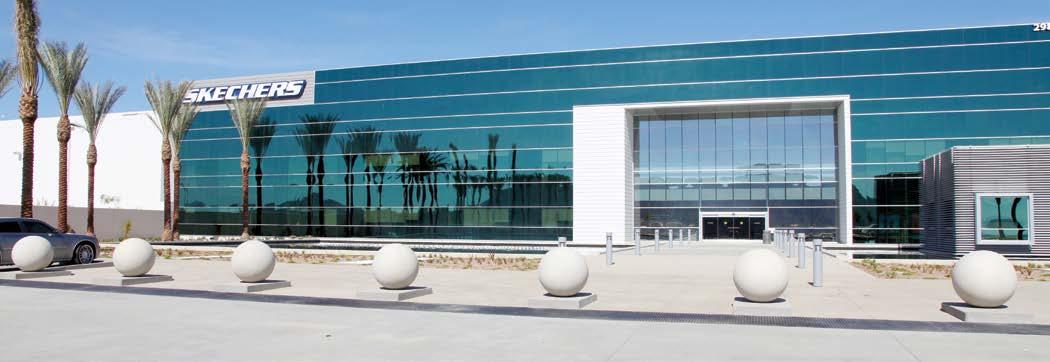
SOLUTIONS SHOWCASE AMERICAN DYNAMICS
foreign trade zones. The integrator, which has done numerous retail-related projects, found this to be its largest distribution center to date and the one deploying the largest number of cameras.
Patel says the challenges for SST included the length of the project—it took several years from concept to completion—and making changes along the way as the building took shape and needs changed, all while still staying within the structures of the budget.
The Solution
As the backbone of its surveillance system, SKECHERS and SST selected the victor video management system from American Dynamics. With the powerful victor unified client, SKECHERS’ security staff is able to view, manage, and control recorded video from five VideoEdge network video recorders.
Some key features of victor, including its ability to instantly play back high-resolution video and tie into the access control system to bring up video related to alarms, such as doors left open, made it an easy selection for the project according to Patel. For operators, victor is fairly intuitive so that officers could use it even before receiving formal training on it.
“Even the least technical officer can get into the system and set up views and do archiving,” said Drivas. “The user-friendly nature of the victor interface allowed our staff to be up and running on the system very quickly.”
The driving factor, though, was ensuring that they had the ability to constantly capture the comings and goings within the foreign trade zone, even to the point of following vehicles from camera to camera as they traveled through the complex. “Because of the amount of live, streaming video and the need to manage large, megapixel cameras at all times, we were confident that the victor client would be powerful enough to meet our needs,” Drivas said.
One of the additional benefits, added Drivas, was the ability to capitalize on the clarity and accessibility of the video for non-security uses, such as the operations group at the distribution center using the video to monitor product movement on the conveyor system.
Patel said they worked closely with SKECHERS’ IT department on the fiber that was laid for both security and the IT infrastructure in the facility. The fiber was laid out to specifications, according to Patel, even accommodating those cameras that needed to be placed above 350 feet. Other pre-planning efforts went into the project, including laying out the network typology with IP addresses for each camera, making the installation go smoothly.
For cameras, SST installed a variety of cameras, including American Dynamics Illustra 400 Series mini domes and IP
While being a foreign trade zone reaps benefits for SKECHERS, it also comes with some specific security requirements. Greg Drivas, director of loss prevention for SKECHERS USA, says there is a higher expectation for perimeter security, as product is monitored entering and exiting the warehouse, which heightens the overall security needs versus a traditional warehouse operation.
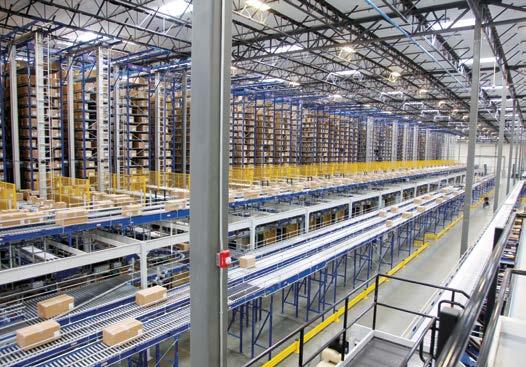
SpeedDome programmable cameras. In addition, the project used Flir thermal-imaging cameras to view the backside of the building, and four 180-degree megapixel cameras that increased the capacity of the 150 or so cameras to that of 300 individual camera views.
SKECHERS is using an internal network video storage solution from American Dynamics, which was attractive because it was a turnkey solution for the IT department.
To bring the SKECHERS project to fruition, SKECHERS and SST staff needed to work closely with the SKECHERS’ compliance department to meet the specific foreign trade zone security requirements. Because of the size of the facility, the project was accomplished in three sections.
The building’s security control room, where video is monitored 24/7, features three 42-inch screens on the wall and four additional 24-inch call-up monitors for each control room officer. There is also a separate monitor for the Identicard access control system used for all points of entry, which is tied into the victor system.
SKECHERS designed this new distribution center to give the company flexibility in its operations and a centralized distribution point for the next twenty years. By choosing victor and an IP surveillance solution from American Dynamics, SKECHERS is giving its security staff the same flexibility, allowing the camera network to grow along with the facility.
SOLUTIONS SHOWCASE INTELLIGENT LOSS PREVENTION
RFID Meets LP—Reduce Shrink by Using RFID in Targeted Categories at the Display Level
RFID in the retail market has been a long time coming. So long in fact, that when we introduced our first RFID-enabled loss prevention solution, most retailers agreed that RFID was the future…the distant future. RFID-based initiatives were for early adopters while the majority of retailers preferred to “wait and see.”
But this year we have seen a shift in receptiveness toward RFID after the widely-publicized success of pioneers like American Apparel and Macy’s. According to a report published by RFID Journal in January 2012, half of U.S. retailers are currently using item-level RFID, and most retailers will adopt RFID technology within three to five years.
With RFID a present or soon-to-be reality for most retailers, loss prevention professionals need to be equipped to maximize the benefits of RFID within their department. RFID is often misunderstood as exclusively a system-wide solution that evokes more fear than progress. Sadly, retailers miss the immediate and achievable benefits of RFID when looking at it only as a long-term, all-encompassing solution.
We’ve developed a scalable solution that works at the display level and is ideal for high-theft categories. By targeting as little as one category, retailers can reduce shrink, automate inventory management, and increase sales.
Smart Surfaces
Smart Surfaces contain embedded antennas that detect when a RFID-tagged product has been removed. Smart Surface formats include shelves, panels, flooring, and fitting rooms. Our RFID-enabled Smart Surfaces have loss prevention applications in addition to traditional inventory management functions: ■ Sweep Notification—If unusual product movement occurs, an alert is immediately sent to store staff on a smartphone or via overhead page. ■ PVM—An optional integrated monitor will switch from promotional content to recording mode upon product removal to create additional deterrence. ■ Inventory Reporting—By quantifying and identifying all items within their reading area, Smart Surfaces automatically provide real-time inventory alerts via
smartphone or PC in the event of low inventory or approaching expiration dates. ■ Fitting Room Alert—Associates receive updates via handheld device if a high-theft item enters the fitting room, if an unusual quantity of items are brought into the fitting room, or if items remain in the fitting room for an unusual amount of time.
Scalability. Only a few retailers are close to achieving storewide RFID implementation within the next year. However, RFID can reduce shrink in targeted categories long before full-scale deployment. Our Smart Surfaces allow retailers to utilize RFID at the display level in as little as one high-theft product category. Plus, Smart Surfaces can be integrated into a full-scale solution that we develop over time.
Sell More, Lose Less. Our goal is always to integrate product security in an open display format that drives sales. With item-level tagging, Smart Surfaces provide nearly “invisible” product protection resulting on average in 50 percent shrink reduction and 19 percent sales increase.
Win-Win. Departments are increasingly working together to achieve the common goal of selling more and losing less. Smart Surfaces not only reduce theft, they deliver marketing analytics, interactive customer experience, and automatic inventory management, making this a multi-level solution that can be supported across several departments, not just loss prevention.
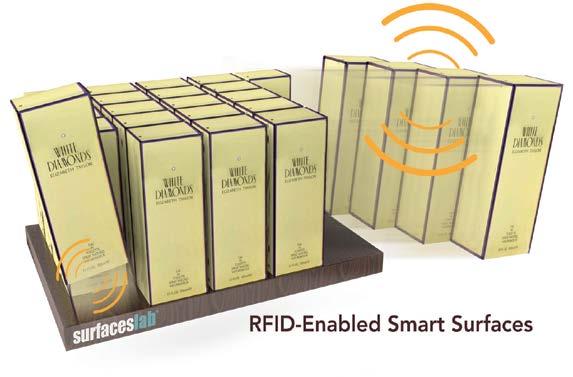
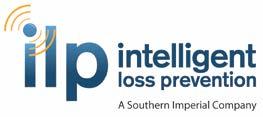
Intelligent Loss Prevention (ILP) is the consultative security division of Southern Imperial, Inc., a leading manufacturer of retail displays for over fifty years. Southern Imperial is an employee-owned corporation headquartered in Rockford, Illinois. For more information about Smart Surfaces, please contact ILP at info@IntelligentLossPrevention.com or visit IntelligentLossPrevention.com.
Self-Checkout Theft Survey Highlights Dishonesty
Raise your hand if you regularly read the “Dilbert” comic strip written by Scott Adams. A mid-May installment pictures Bob the Dinosaur in the first panel, flanked by Pointy-Haired Boss and Wally, lamenting that product sales have “dropped to zero in retail stores that have self-checkout.” Bob reasons that the customers who are “dumb enough to want our product are too dumb to know how to use self-checkout.” In the last panel, Pointy-Haired Boss agrees with Bob’s proclamation of the bright side of the situation. “On a positive note we have the most shoplifted product of the year.”
Scott Adams must have seen the results of an on-line consumer survey indicating that almost 30 percent of shoppers admit to stealing when using self-checkout in supermarkets in the United Kingdom. The single-question survey was conducted in April by Watch My Wallet, a UK-based Internet site that provides advice, reviews, features, and news on retail-related topics. Here are the results from the survey question “Have you ever cheated at a supermarket self-service checkout?” ■ 58% chose “No, I’m scared of getting caught.” ■ 13% “No, I consider it stealing.” ■ 8% “Yes, I selected a cheaper item when manually entering fruits and vegetables.” ■ 8% “Yes, I selected ‘small’ when scanning a ‘large’ salad box.” ■ 7% “Yes, I bagged something without scanning it.” ■ 5% “Yes, I walked off without paying.” ■ 2% “Yes, I tampered with the weighing scales.” The good news is that 71 percent of survey respondents indicated they would not cheat at self-checkout systems.
Consumers make the assumption that self-checkout systems contain some sort of inherent security measures. In practice, however, the systems are built for maximum transaction throughput with a minimum of disruptive requests to “see the attendant.”
In the early development years, circa 1984 to 1995, self-checkout designers were concerned about security and thought that the system should be able to somehow discriminate between every item. Scanning a cheap item and placing an expensive one in the bag should not be possible, they thought. Developers came up with two possible solutions—weights and measurements.
The idea was to measure or weigh every single stock-keeping unit (SKU) and compare the scanned item to the database to see whether or not it was “correct” within certain statistical limits. One of the original systems had a large box covering a conveyor belt, not unlike the luggage scanning portals used by airport security personnel. Laser beams were strategically positioned inside the box to try to measure the outer dimensions of the scanned items. If a “fit” occurred, the belt continued to move. If the item’s size didn’t match the database, the belt stopped, reversed itself, and sent the item back to the customer for a rescan. While measurement may have been a good idea in theory, in practice it simply slowed down transaction productivity and raised customers’ blood pressure, so the practice was never adopted.
A more recent solution to this problem is a sophisticated weight-learning database software program that is constantly running in the background. Weight-learning database software corroborates items quickly and transparently to the customer. It is designed to allow retailers to easily update the system with either new or discontinued items. As items are scanned and placed in the bag well of the system, an internal scale tracks additional weight and queries the database for corroboration. If no item is bagged or if an item’s weight doesn’t match up to the database, the system prompts the customer to seek assistance from the attendant.
The bottom line is that retailers continue to weigh the positive and negative aspects of a self-checkout regimen. Some, like the European giant Tesco, continue to deploy self-checkout systems wherever practical, whether or not they contain suitable security measures. Others like Big Y Foods have removed them entirely. Luckily, the fraction of consumers who are inclined to steal remains under 30 percent…at least in the U.K.
by Robert L. DiLonardo
DiLonardo is a well-known authority on the electronic article surveillance business, the cost justification of security products and services, and retail accounting. He is the principal of Retail Consulting Partners, LLC (www.retailconsultingllc.com), a firm that provides strategic and tactical guidance in retail security equipment procurement. DiLonardo can be reached at 727-709-6961 or by email at rdilonar@tampabay.rr.com.
LP Industry Loses Two Well-Known Executives
Former Walmart loss prevention leader, Dave Gorman, succumbed to cancer on May 15 at the age of 65, and CarMax’s Fred Wilson died from a heart attack on June 5 at the age of 62. Both were well-known, respected retail executives.
Dave Gorman
Dave Gorman
Gorman began his loss prevention career in shortage control and inventory administration with Venture Stores, a division of May Company, in 1973 following his graduation from Southern Illinois University and service in the U.S. Marine Corps in Vietnam. He joined Walmart in 1980 as director of audit and was promoted to vice president of loss prevention in 1983. When he
retired from Walmart in 2002, he was responsible for risk control, food safety, security, and loss prevention worldwide.
He remained active in the industry as a consultant through his company Dave Gorman and Associates, working with a wide variety of retailers and supply-chain clients.
“Setting the standard in loss prevention defined Dave Gorman with his intensity, aggressive opinions, and strong belief that propelled the term ‘world class.’ Dave was just that—a world-class icon in our industry,” says Kevin Wolfe. “He once told me not to leave things the way they are; change is the norm, and it’s no excuse for a lack of performance. He said to make change work for you and focus on what’s most important to the success of the enterprise. He was passionate, honest, and open to sharing his success, and never retreated from assisting others toward reaching their goals. Dave has left us a legacy to remember well beyond tomorrow.”
“At my first meeting with Dave, I engaged him in a couple of hours of debate at a whiteboard discussing the possibilities within retail loss prevention,” remembers Darrell Taylor, vice president of LP and security at H-E-B. “It was then I realized just how much fun it was just to talk with him about what we do. I had a deep respect for Dave and was always impressed with his candid ‘call-it-like-it-is’ approach and his willingness to give advice. He could always help you maneuver through tough spots and was willing to give you full advantage of his experience in our discipline. My team and I will truly miss Dave’s presence and friendship.”
Gorman served on the LP steering committee for the Retail Industry Leaders Association for more than twenty years and was a
Fred Wilson
Wilson was vice president of store administration at CarMax at the time of his death. He transferred to CarMax in 1996 from its parent company, Circuit City, where he was director of LP. Wilson’s forty years in the LP industry included positions with a number of retailers, including Payless ShoeSource, Shaak Fred Wilson Electronics, Musicland, and Montgomery Ward.
“I first knew Fred in the late ‘70s when both of us were at Montgomery Ward,” says Jim Lee, executive editor at LP Magazine. “Even then Fred was quiet and introspective. If you did not know him, you might think there was not much going on with him. Very much the opposite. Fred was a brilliant loss prevention executive and thinker. He created analytics at Circuit City before the word ‘analytics’ was created; way out ahead of the rest of us. I am deeply saddened by his passing and will miss him greatly. The industry has lost one of the innovators in loss prevention and a friend to many.”
One of those friends is Kris Fuerstenberg, loss prevention specialist at the Navy Exchange Service Command. “Fred was an incredible, very unique man,” says Fuerstenberg. “He had a brilliant mind, a generous spirit, a fun sense of humor, and a huge heart. He loved his work and his family and friends. He was selfless, both professionally and personally. Every conversation that I had with him left me feeling energized and enthusiastic. He was
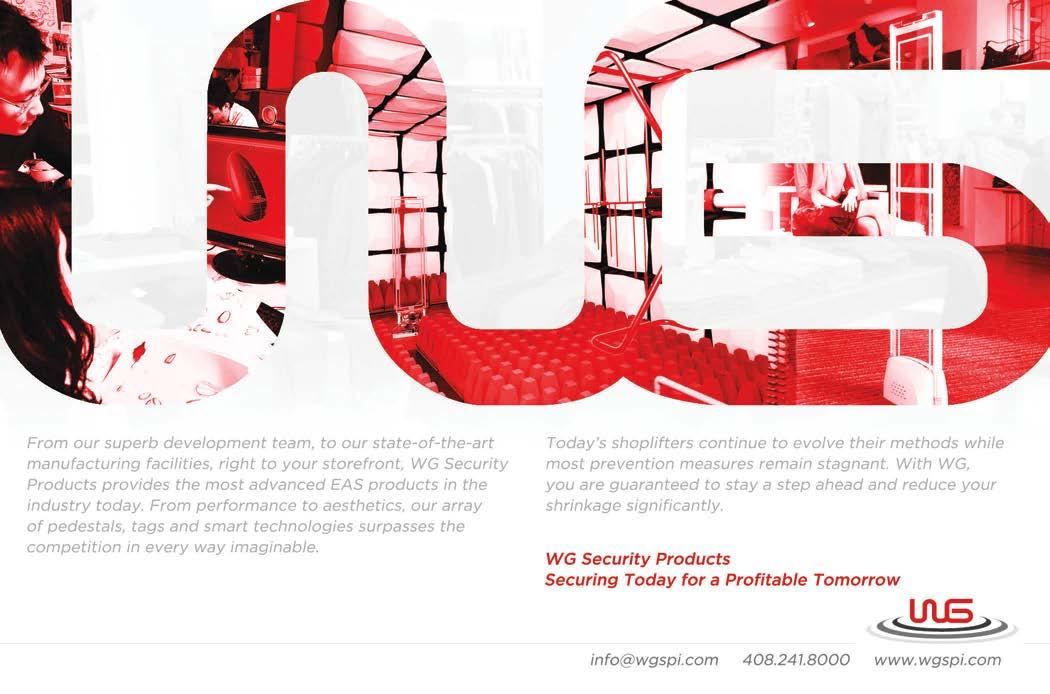
my professional mentor and my friend. He had a tremendous impact on my life. I will miss him dearly. Fred’s death is a devastating loss.”
Wilson was a member of the National Retail Federation (NRF) LP advisory board as well as the Retail LP Council of ASIS International. He was inducted into the NRF Ring of Excellence for lifetime achievement in loss prevention in 2008.
Vector Security Rebrands to Reinforce an Updated Business Strategy
For the first time in twenty-six years, the recognizable Vector Security® logo is changing its look to a more contemporary design to go along with an updated business strategy. The company’s plan is to engage customers in new ways that will position the company as a leading provider of security and security-related solutions tailored to a customer’s specific needs and business objectives. This positioning is expressed in a new company tagline—Intelligent security tailored for you.SM
“Our updated look and strategy reinforces our commitment to several hundred thousand customers that we are constantly working to anticipate their security needs, apply new technologies, and advance how we deliver them,” says Pam Petrow, president and CEO of Vector Security. “Our goal is to build lasting relationships with customers through unparalleled customer service and to be their advocate on security issues, product advancements, and services to help maximize the value of their security investments.”
Vector’s business approach involves tailoring a customer’s specific security needs by deploying quality security solutions uniquely crafted for their home or business. This customized approach is backed by personal, customized support and a reputation for outstanding customer service.

Expanding Business Opportunities
With security more top-of-mind than ever in the United States, the company’s business is expanding beyond being a burglar- and fire-alarm company. Today, the company uses numerous technology-based solutions to address customer needs, including mobile applications for smartphones and tablets, interactive services, or video-based solutions.
While there are no organizational changes associated with this rebranding, the company saw this as an opportunity to create a customer experience that is consistent and valued no matter where the customer interacts with Vector Security.
“Our business model has consistently matured to offer a complete roster of security solutions and related services to our retail customers,” says Michael Grady, executive vice president of Vector Security. “Over the past twenty years, our success in the retail space has been based on recognizing changes and emerging trends in loss prevention needs and responding with innovative products, services, and new approaches. Most
PROTECT YOUR BRAND.
When it comes to civil recovery, how important is brand protection to your company?
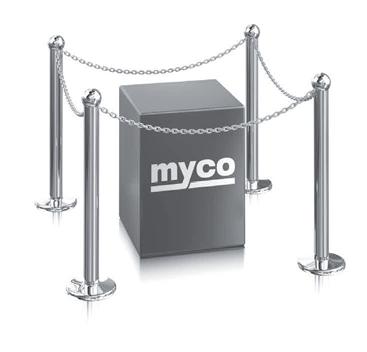
At Palmer, Reifler & Associates, we work closely with our retail clients to provide customized legal representation that is right for them. Our team of attorneys is integral to our civil recovery process, ensuring important legal standards and protections, while optimizing recovery performance.

Place your trust in the law firm with a focus on Civil Recovery Law.
ORLANDO | ATLANTA | CHICAGO | DALLAS LOS ANGELES | LONDON | TORONTO Toll-Free in the U.S.: 866.875.6565
P A L M E R R E I F L E R L A W . C O M
August 5 – 8, 2012 National Food Service Security Council Annual Conference and Exposition Hyatt Regency Inner Harbor Baltimore, MD www.nfssc.com
September 10 – 13, 2012 ASIS International 58th Annual Seminar and Exhibits Philadelphia (PA) Convention Center www.asisonline.org
September 12, 2012 Retail Council of Canada Loss Prevention Conference International Centre, Toronto, ON www.rcclpconference.ca
September 17 – 20, 2012 Coalition of Law Enforcement and Retail (CLEAR) 2012 Annual Training Conference Hyatt Regency, Dallas, TX www.clearusa.org
October 7 – 9, 2012 Sponsored by Sony, Envysion, Axis, and Bright Hat Solutions 3rd Annual MVaaS Summit—Unleash Video The St. Julien Hotel, Boulder, CO www.envysion.com/mvaas-summit
October 8 – 10, 2012 Sponsored by Tyco Integrated Security RETECH Westin Fort Lauderdale Beach, FL
October 15 – 17, 2012 Loss Prevention Research Council 8th Annual Impact Workshop University of Florida campus Gainesville, FL www.lpresearch.org
October 30 – 31, 2012 ISC East 2012 Jacob Javits Convention Center New York, NY www.isceast.com
March 10 – 13, 2013 Food Marketing Institute 2013 Asset Protection Conference Pointe Hilton Tapatio Cliffs, Phoenix, AZ www.fmi.org
April 28 – May 1, 2013 Retail Industry Leaders Association 2013 LP, Audit, & Safety Conference Gaylord Palms Resort, Orlando, FL www.rila.org recently we built a state-of-the-art National Services Center and entered into the managed network services business to add additional value to our retail customers across North America.”
The Rebranding Process
Vector Security built an internal marketing communications team to help support the new rebranding effort led by Art Miller, VP of marketing, who brought over twenty-five years of experience in building brands and marketing programs for companies across the U.S. and Canada. The internal marketing communications group worked with various boutique design and marketing companies to support the initial development of the brand positioning and identity development.
The rebranding process began in late 2011 through a series of information-gathering sessions with employees across the company, with a particular emphasis on obtaining feedback from their sales teams. “Our sales teams are the direct contact with our customers,” said Miller. “We wanted to understand how customers were responding to our brand in the marketplace and how that experience differed by type of customer. We completely approached our rebranding with the customer in mind every step of the way.”
Vector also launched a survey to all customers in January to obtain their direct feedback on what is important to them. “We asked and our customers responded,” noted Miller. “The results from this survey underpinned what is important to customers and when coupled with our internal feedback, gave us a strong starting point to rebrand the company.
“We also looked at the industry, our competitors, and turned to our product partners for additional feedback. We then developed a value proposition that reinforced our commitment to our customers’ security goals and objectives.”
All the feedback was used to begin the development of key messages, look and feel, and new logo development that were then tested with our customers. “We held three separate focus groups—one with residential customers, one with commercial customers, and one with national account customers,” explained Miller. “The feedback was overwhelmingly positive and reinforced that we were heading in the right direction with our new branding.”
The company began communicating the new branding to all employees in March and then to customers in June. A series of direct marketing pieces were sent directly to customers, reinforced by face-to-face meetings with customers to introduce the brand. A redesigned website is set to launch in July at VectorSecurity.com.
Glue Thwarts Bank Cash-Box Theft
The slang term “sticky fingers” is synonymous with petty thievery. Three Londoners were apprehended shortly after they had difficulty handling cash filched from a stolen cash box at a Lloyds Bank branch that had been fitted with a new security system that coats the bills with glue mixed with dye and a colorless, traceable liquid known as SmartWater. A classic benefit-denial device, the liquid substance is released when someone tries to tamper with the cash box. The glue laminates the bank notes together, the dye stains them, and the SmartWater contaminates the person who has breached the box. The DNA-style code within the SmartWater lasts up to six months and will link the individual to the specific theft.
In recent years cash-in-transit thefts in the London metropolitan area have risen to the extent that the police have activated a “Flying Squad” whose sole duty is to gain some control over the situation. This is the first case in which a conviction has been made on the strength of the glue. London police have high hopes that the widespread use of this new technology will result in a drop in cash theft attempts.
The moral of this story is, while sticky fingers may get the goods, sticky glue fingers the thieves.
7-Eleven announced the appointments of Byron Smith, CFI to Corporate Supply Chain AP Manager and Karl Suhanyi to Zone AP Manager. Nate Frazier, CFI was promoted to Director of LP for Abercrombie & Fitch. Todd Worthey was promoted to Regional VP at Advanced Auto Parts. Kristen Silva was named Regional LP Investigator at A’GACI. Scott Ziter was promoted to VP of AP for Ahold USA. Cassie Kiser Brodie was appointed LP Manager at Amazon.com. Lance Williams, CFI was promoted to VP of LP for Big Lots Stores. Gary Joseph was appointed to LP Manager at Bloomingdale’s. John Harrison has been named Regional Investigator at Books-A-Million. Karen Duckworth, CFI was appointed Regional LP Manager at Brighton Collectibles. Jonathan Carroll was named District LP Manager at Brookstone. Katerina Chizhikova was appointed Internal Investigations/Auditor/Trainer at Burlington Coat Factory. Ted Grekos, CFE was promoted to Senior Manager, Global Security and Compliance for Charming Shoppes. Mike Matz was appointed Regional LP Manager at The Children’s Place. DeWayne Harrison, CFI was named Regional LP Director at Compass Group. Marty Schnurr has been appointed President of Stanley CSS North America. Scott Perry was appointed Regional LP Manager at Dollar General. John Anthony was named Divisional LP Manager at Genuine Parts Company. Greg Houting was named Regional LP Manager at Golf Galaxy/Dick’s Sporting Goods. Art Silva has been appointed Director of LP for Hallmark Cards. Mike Appel was appointed District Investigator at The Home Depot. Chris Woodroffe was promoted to Director of LP for International Group of Companies. Jennifer Geiser was promoted to Manager of AP at Jo-Ann Stores. Limited Brands announced the promotion of Bill Gropper to Director LP/Safety Services and the appointment of Imran Qazi, LPQ to District LP Manager.
CERTIFICATION continued from page 40
Recent LPQ Recipients
Casey Alexander, LPQ, Gordmans Deborah Bunch, LPQ, Haynes Furniture Raychelle Burwell, LPQ, Old Navy Christopher Conforti, LPQ,
Ocean State Jobbers Thomas Courtney, LPQ, LifeWay
Christian Stores David Crill, LPQ, Archangle Investigations Ricardo Diaz, LPQ, Kmart Melissa Elson, LPQ, Shopbop.com Gregory Enfinger, LPQ, Student Andrew Field, LPQ, Goodwill Blake Hampton, LPQ, Goodwill Darren Jackson, LPQ, Home Depot Charlyne Lagudi, LPQ, Pep Boys Brandon Mathews, LPQ, Corrections
Corporation of America Philippe Meca, LPQ, El Rancho Jose Mendoza, LPQ, Michaels Milan Nelson, LPQ, Michaels James Nguyen, LPQ, Pep Boys William Pond, LPQ Michael Rusk, LPQ, Walmart Kristen Schrader, LPQ, Apple Jerry Sisson, LPQ, Pep Boys Shannon Speelman, LPQ, Rite Aid Edward Turner, LPQ, Staples
Johanna Agudelo was named LP Manager at Louis Vuitton. Hank Jones was promoted to Director of Safety and Hazmat for Lowe’s. Michael Elliott was appointed Data Analytics Manager at LP Innovations. Brian Starling, CFI was appointed District Manager of Investigations at Macy’s. Frank Hernandez and Juan Ospina, CFI were appointed Regional LP Manager and Corporate LP Manager, respectively, at Michael Kors. Bill Warrick, CFE was appointed Senior Product Consultant at MICROS Systems. Hal Parker has been appointed Retail LP Specialist at New Balance. Sal Miele was named Manager of LP at NPC International. Chris Bitner was promoted to Senior Director/CISO, Global Information Security and Compliance for Office Depot. William Gravelyn was promoted to Corporate Investigations Manager at Orchard Supply Hardware. Melanie Meschwitz was promoted to Regional LP and Safety Manager at PetSmart. Chris Hinger, CFI was named Senior Director of AP for Polo Ralph Lauren. Chris Penton has been appointed Senior Director of LP for Radio Shack. Darian Griffin was appointed Division Manager of LP at Ralph’s Grocery Company. Ross announced the following changes: Will Baker promoted to Senior Director of LP, Tayton Fain appointed Area LP Manager, and Adrian Mesa named LP Outbound Investigative Analyst. Hector Graciani was named AP Manager at Saks 5th Avenue. John O’Leary was appointed Regional Sales Manager at Secura Key. James Martin was promoted to Director of Sales for Security Resources. Carol Bowker, ARM was appointed Director of Risk Management for Smashburger. Robert Rice was named Director, Retail Security for Sony. Jen Drake, CFI was named AP Operations Manager for Target Canada. Sanford Siegel was appointed Manager of LP at TGI Friday’s. Universal Surveillance Systems announced the promotion of Rod Holm to Senior VP of Global Business Development and the appointments of Erin Edwards to VP of Sales and Steve McClain to Executive Vice President. Richard C. Hollinger, Ph.D. was named Chair of the Department of Sociology and Criminology and Law for the University of Florida. Rob Skelly was named LP Director, Central U.S. for U.S. Security Associates. Bret McGowan was promoted to Senior VP, Sales and Marketing for Vicon. Sonya Hostetler has been promoted to VP of AP and Safety for Walmart. David Groh was promoted to Corporate Risk and LP Manager at Weekends Only. Megan Lynch was appointed Senior Manager of Recovery Operations at The Zellman Group.
To stay up-to-date on the latest career moves as they happen, sign up for the magazine’s weekly e-newsletter or visit the People on the Move page in the Community section of the magazine website, LPportal.com. Information for People on the Move is provided in part by the Loss Prevention Foundation, Loss Prevention Recruiters, and Jennings Executive Recruiting. Send information on promotions and new hires to peopleonthemove@LPportal.com.
3VR........................................................................ 43 www.3vr.com/retailguide Alpha................................................................19, 21 www.alphaworld.com American Dynamics ..............................................9 www.americandynamics.net/illustra ASIS International ...............................................67 www.asis2012.org Axis Communications..........................................15 www.axis.com/companion Checkpoint ......................................................33, 35 www.checkpointsystems.com ClickIt Inc. .............................................................47 www.clickitinc.com Contact...................................................................49 www.contactinc.com Corporate Safe Specialists ................................51 www.remotecashcapture.net Detex......................................................................29 www.detex.com/230X Evolution Robotics Retail....................................62 www.evoretail.com Gulfcoast Software Solutions..............................3 www.gulfcoastsoftware.com i3 International ......................................................39 www.i3international.com/lp InstaKey.................................................................23 www.instakey.com Intelligent Loss Prevention.................................46 www.intelligentlossprevention.com International Assoc. of Interviewers................57 www.iaofi.org InVue........................................................................2 www.invuecabinetlock.com LERPnet2.0.............................................................59 www.lerpnet2.com LockUp...................................................................45 www.lockup.com LPC..........................................................................26 www.losspreventionfoundation.org LPjobs.....................................................................61 www.lpjobs.com Milestone...............................................................55 www.milestonesys.com NuTech National....................................................7 www.nutechnational.com Palmer, Reifler and Associates.........................69 www.palmerreiflerlaw.com The Retail Equation................................................5 www.theretailequation.com/success Security Resources .............................................75 www.securityresources.net Sony Retail Solutions ..........................................25 www.sony.com/security/retail Tyco Integrated Security....................................76 www.tycois.com Vector Security ....................................................37 www.vectorsecurity.com Verisk Crime Analytics........................................59 www.verisk.com WG Security Products ........................................68 www.wgspi.com MAGAZINE
Subscribe for Free
LP Magazine is available free to loss prevention and retail professionals throughout the U.S. and Canada. There’s no excuse for anyone interested in keeping up with the LP industry to not get the magazine.
To sign up for a free subscription, go to www.myLPmag.com. It’s simple. Takes only a minute. Or fax the completed form below to 978-671-0460. International Subscription. LP professionals outside the U.S. and Canada can either read the digital magazine free or receive the print version for $99 per year. Visit the Subscription page at www.LPportal.com to purchase an international subscription.
❍ Yes, I would like to receive/continue to receive LP Magazine FREE of charge. ❍ No thanks. ❍ Yes, I would also like to receive/continue to receive your e-newsletter FREE of charge. ❍ No thanks.
Please fill out completely: Signature____________________________________________________________
Date __________________ Telephone__________________________________________________________________________________ Fax ________________________________________________________________________________________ Email ______________________________________________________________________________________ First __________________________ Middle ______________________ Last _____________________________ Title _______________________________________________________________________________________ Company __________________________________________________________________________________ Address1 ___________________________________________________________________________________ Address2 ___________________________________________________________________________________ City _______________________________________________________________________________________ State/Province ___________________Zip/Postal Code ___________________Country ❍ USA ❍ Canada You must answer both questions to receive LP Magazine
1. What is your company’s primary business? (Check one only)
Retail
❍ (A) Department store/mass merchandiser ❍ (B) Discount/wholesale club/outlet/ off-price ❍ (C) Specialty apparel/footwear/gifts/ jewelry/sporting goods ❍ (D) Home center/hardware/appliances/ furniture ❍ (E) Drug store/pharmacy/vitamins ❍ (F) Office supplies/electronics/videos/ music/books ❍ (G) Grocery/supermarket/ convenience store ❍ (H) Restaurant/hospitality/ entertainment ❍ (X) Other retailer _____________________
Non-Retail
❍ (N) Consulting/integrator ❍ (P) Product manufacturer ❍ (R) Services/outsourcing ❍ (S) Law enforcement/government/military ❍ (T) Education/library/media ❍ (Z) Other non-retail ________________
2. What is the primary focus of your job? (Check one only)
Retail Loss Prevention/Security
❍ (10) Corporate/regional/district manager ❍ (11) Store LP manger/investigator/ associate ❍ (12) DC/logistics/supply-chain manager ❍ (19) Other LP manager _______________________________
Other Retail
❍ (20) Corporate operations/store manager ❍ (21) Finance/HR/legal/IT/training manager ❍ (29) Other retail manager _______________________________
Non-Retail
❍ (30) Vendor executive/owner/ manager ❍ (31) Consultant ❍ (32) Sales/marketing manager ❍ (33) Police officer/active military ❍ (34) Educator/student/librarian ❍ (39) Other non-retail manager _______________________________
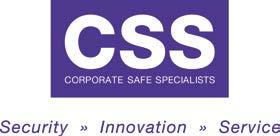
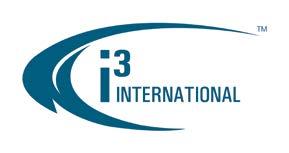
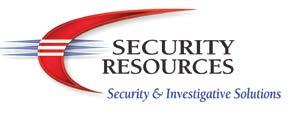
High Theft Solutions






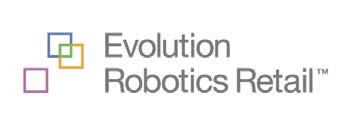
VENDOR ADVISORY BOARD
3VR Pete Schmidt Senior Director, Retail Solutions Alpha Diane Wise Global Marketing Manager American Dynamics Carol Vardaro Marketing Specialist Axis Communications Jackie Andersen Business Development Manager, Retail Checkpoint Carlos Perez Senior Director, Global Marketing ClickIt Inc. Jim Paul Director of Sales
Corporate Safe Specialists Ed McGunn President/CEO
LockUp Emma Mann Marketing Director Evolution Robotics Colleen Lindsey Marketing Director Gulfcoast Software Solutions Tim Lindblom Executive Vice President i3 International Vy Hoang Executive Vice President, Sales and Marketing InstaKey Security Systems Cita Doyle Director of Sales & Marketing Intelligent Loss Prevention Jay Leedy Business Development Manager Milestone Systems Trenton Thoms Retail Sales Manager Palmer, Reifler & Associates Jeff Welch Executive Director The Retail Equation Tom Rittman Vice President, Marketing Security Resources, Inc. Kris Vece Business Development Tyco Integrated Security Kevin E. Lynch, LPC Executive Director
Verisk Crime Analytics David Duhaime President Aspect Loss Prevention
Half in the Bag
Since my total alcohol consumption is an occasional glass of wine, I can safely use the term “half in the bag” and not feel a bit guilty. The year 2012 is half in the bag, and the planning for 2013 is upon us. The three industry-related events that I attended for the magazine were the national conferences put on by FMI, RILA, and NRF. Each is unique from one another, and each has its own distinct value. If you attended any then you bear the responsibility to be better and pass along your learnings to your people.
Maybe the best part of these conferences is renewing friendships and making new contacts. The worst part is not having quality time to spend with those people or, even worse, not seeing them at all. At the recent NRF I was frustrated not to see some special people. Some were there, but we passed in the hall. Others just could not attend. Following is a list of people I could spend half a day with and enjoy the dialogue.
Dan Faketty. He always has an opinion and is willing to share it with you. You don’t have to agree with him, but that is the fun part. At NRF he expressed some strong opinions on ORC, which made people think. He always seems to have a smile on his face that helps make you feel comfortable with him.
Rich Mellor. This was his first conference as leader of NRF’s LP initiatives. As someone said to me, “Do you know anyone nicer than Rich?” He is open, honest, and objective—a real LP professional who is committed to this industry.
Dr. Dick Hollinger. I have often wondered what we would know and who would have helped us know it if Dick had not chosen retail crime to research as a young academic. I may be biased, but he does not get enough time nor money to speak and research for retail.
Melissa Mitchell. It has become an annual event for her to moderate my favorite presentation—the awards ceremony. She shows that video of various companies and LP people giving back to others, and it makes you feel good all over about the LP profession. As we all know, there are many other LP groups who are not shown in the video who are going above and beyond to help others.
Phyllis Holland. Who? Phyllis is a district LP manager who had been a store manager before switching to LP and was in attendance because of her outstanding achievements in shrink reduction. It is no surprise. She owns a big smile, is positive and eager. Isn’t it grand to see store-line people find career value in LP?
Denise Jennings. Denise is one of my personal heroes. She has fought health battles and won, and continues to bring honesty and dedication to this industry.
There were some people not in attendance I missed seeing. One was Monica Mullins, VP of asset protection for Walmart, who recently retired. Monica’s beliefs in diversity, education, training, and respect for others are traits we all could emulate. I am one of many who will miss her involvement in this profession.
Bob MacLea, SVP of LP for TJX, was not in attendance at NRF, but he sent about fifty executives; many because they had achieved outstanding results over the past year. As Bob is apt to do, he stayed home to fight fires at headquarters. If you watched the Volunteers in Action video, you saw Bob front and center leading the charge for his company. He has created a legacy of giving that will go on well past the time he decides fishing and hunting can be a full-time job. Jim Lee Executive Editor
Some Who Have Passed
“One piece of advice that I believe will contribute more to making you a better leader, will provide you with greater happiness and self-esteem, and at the same time advance your career more than any other advice I can provide to you. And it doesn’t call for any certain chemistry. Any one of you can do it. And that advice is that you must care.” That quote is from U.S. Army General Melvin Zais, who was highly decorated in WWII and Vietnam. He was the commanding general of the 101st Airborne at the battle of Hill 937 in Vietnam, more commonly referred to as “Hamburger Hill.” My brother was there for the two-week battle and survived, but he did not survive his recent battle with cancer. I miss him every day.
Two other people I miss are Dave Gorman and Fred Wilson. Both passed this spring (see page 66). Gorman had retired from Walmart after many years as the LP leader. He started there when they were a small company and left when they were the largest. He was a real gentleman. I missed seeing Dave in the exhibit hall, often sitting alone, because so many really did not know him. He was unassuming and laid back. I really enjoyed sitting with him and sharing a story or two.
Fred was a unique individual. Melissa did a marvelous job of speaking of Fred at the awards ceremony. He was a past recipient of the Ring of Excellence award, and no one was more deserving of the honor. I spoke with Fred at the RILA conference, and what was utmost on his mind was not retail crime or shrink. Fred wanted to talk about the broken education system in this country that he felt was the root of many of the problems in our society. He wanted to find ways to fix the system.
What General Zais expressed about great leaders was true of both Dave and Fred. They truly cared about others.
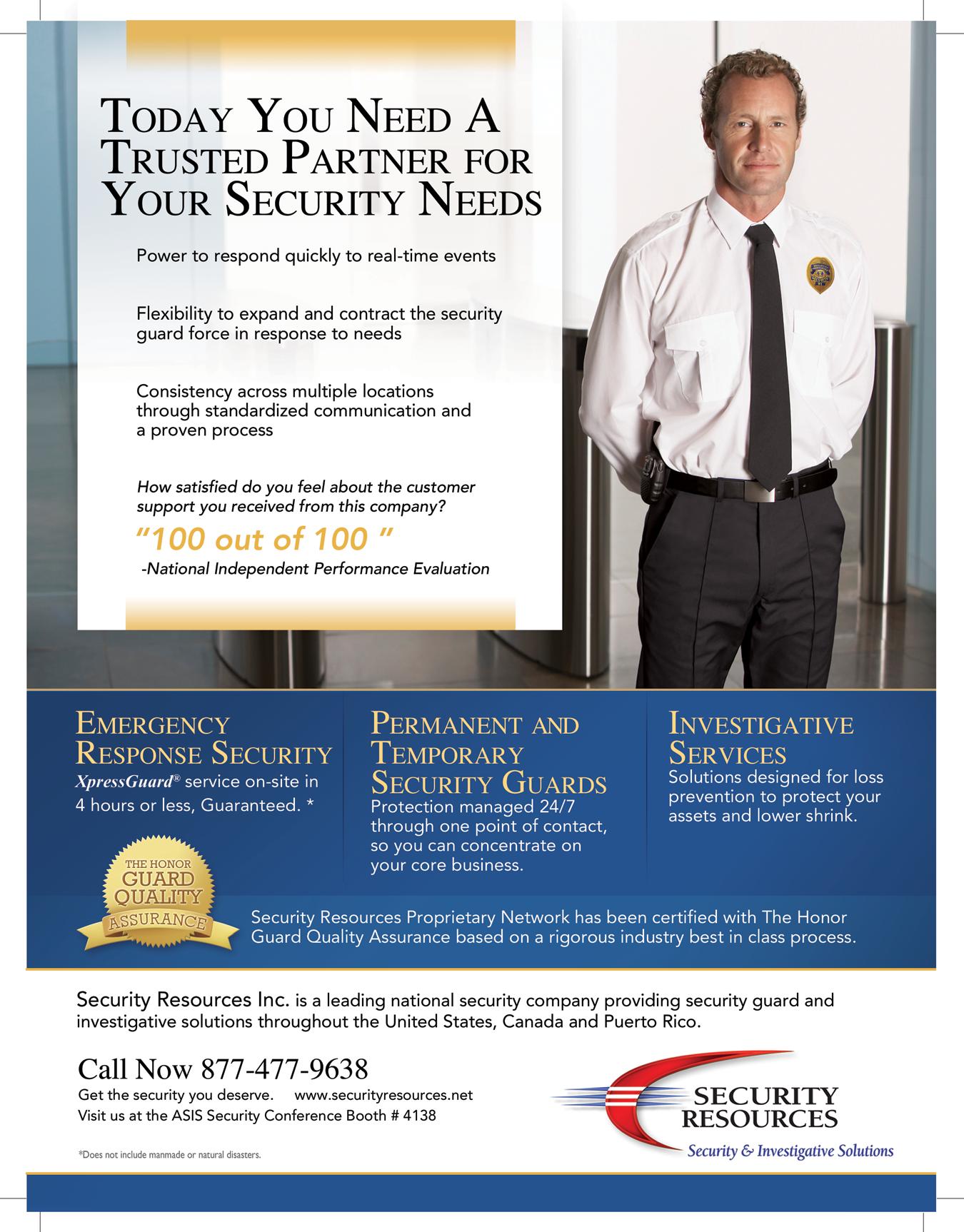
Managed Video helps improve your operations, so you can increase your profits.


Managed Video is an innovative way to get more out of your video investment. Using video and remote monitoring, Tyco Integrated Security can help you keep an eye on your operational efficiencies.
• Video Guard Tours can enhance your audit programs, improve safety compliance, and reduce guard expenses • Video Alarm Verification helps reduce false alarms and costly fines • Video Escort helps improve employee safety during open, close and large cash transactions • Unattended Delivery allows for deliveries before or after hours without employees present • Video Assist uses two-way audio and video contact when and where you need it
Tyco Integrated Security’s UL-Certified monitoring centers watch over retail stores all across North America. Let our special operations team help you improve your operations. We can help manage your video monitoring, so you can focus on the bigger picture.
To learn more, call 1.877.258.6424 or visit www.tycois.com.
MAGAZINE
ORC—A RE R ETAILERS TO B LAME ?
LPportal.com




